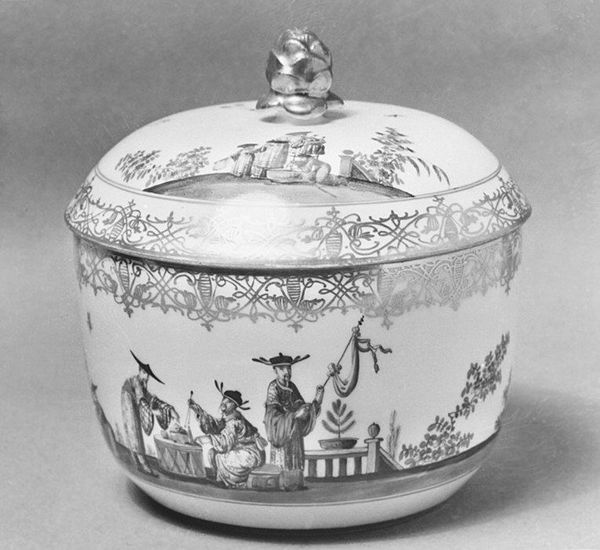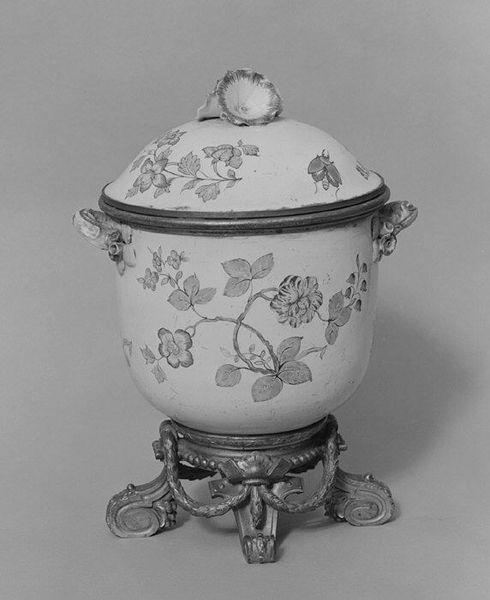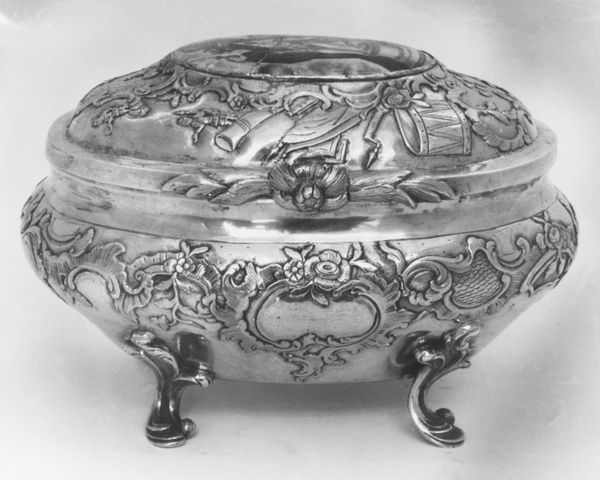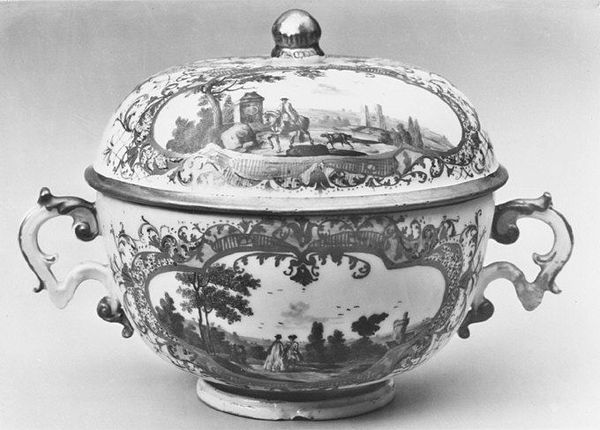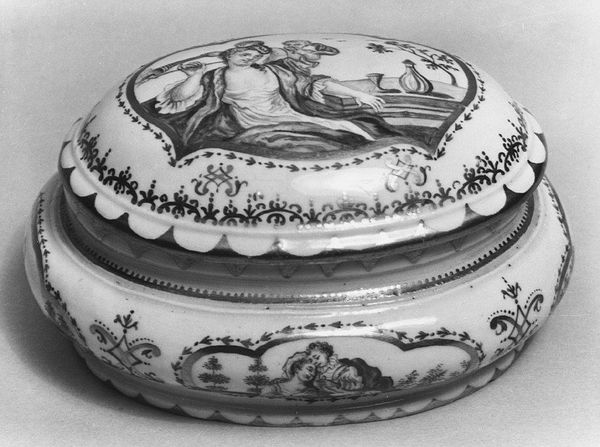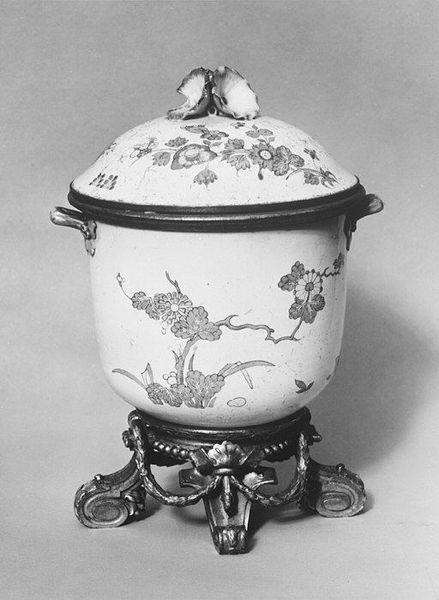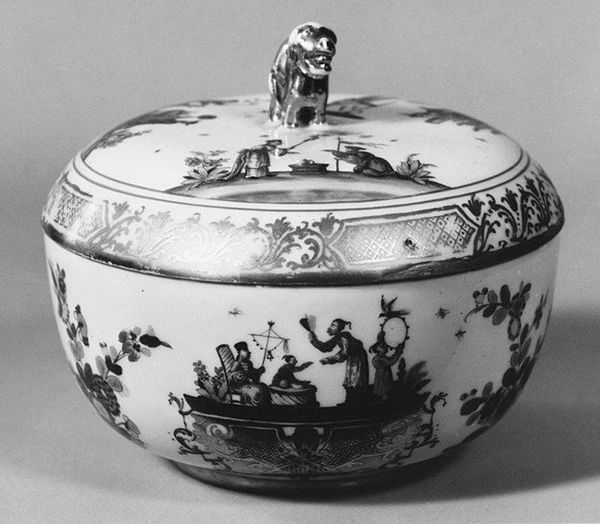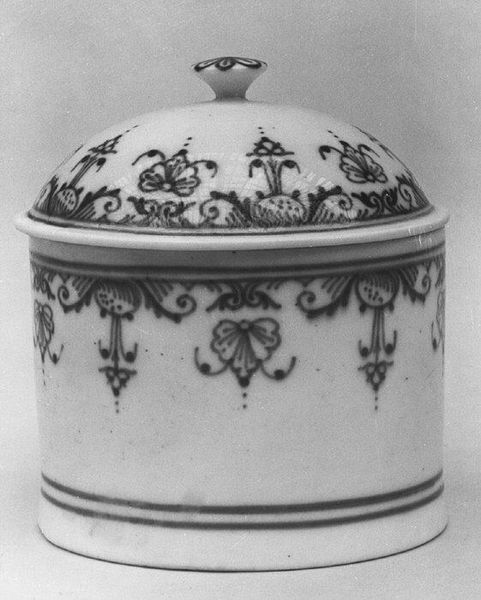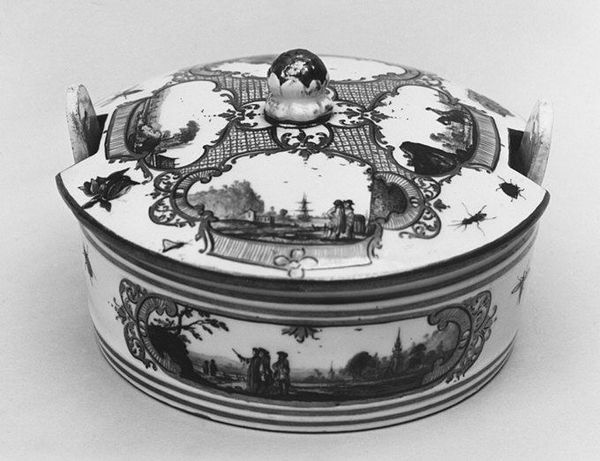
ceramic, porcelain, sculpture
#
fairy-painting
#
landscape
#
ceramic
#
porcelain
#
sculptural image
#
figuration
#
intimism
#
sculpture
#
genre-painting
#
decorative-art
#
miniature
#
rococo
#
monochrome
Dimensions: Height: 4 3/8 in. (11.1 cm)
Copyright: Public Domain
Curator: Standing before us is an exquisite example of 18th-century craftsmanship: a porcelain sugar bowl with a cover, made by the Frankenthal Porcelain Manufactory between 1760 and 1775. Editor: It's enchanting, isn't it? The monochrome palette lends it a sort of ethereal quality. It whispers of secret gardens and intimate moments. Curator: Indeed. Notice the scenes decorating the bowl: depictions of figures in landscapes, almost fairy-tale like. It embodies the Rococo spirit of the time. We are observing how porcelain became a status symbol of its era, fueled by global trade and evolving tastes. Editor: Look at how those figures are rendered. The seated woman gestures openly, almost like an oracle delivering truth or a goddess offering knowledge. It’s like an emblem of wisdom shared. Are those scenes the monochrome, reversed equivalent of well-known romantic images? Curator: That's a compelling reading. We can look into where the Frankenthal artists were drawing inspiration from. As it moved from a noble enterprise to one controlled by the state, they shifted their focus onto more appealing imagery of sentimentality and romance to cater to wider audiences. Editor: What interests me most is how familiar yet timeless the symbolic resonance remains. Water sources always suggest origins and purifications while shared human connections represent intimacy or healing. This intimate depiction feels charged with meaning beyond its aesthetic charm. Curator: Absolutely. It serves not only as a container for sugar but as a reflection of its socio-economic value and its cultural impact on European society during that period. Sugar production has roots in exploitation, while consumption fueled social changes. Editor: Yes. By layering landscape elements into decorative themes for these delicate works – miniature narratives gain emotional intensity…It offers us glimpses not only on fashion statements during 18th-century banquets; still there resides more. Curator: What a wonderful perspective! Hopefully we all see that within historical artifacts like these sugar bowls also remain testaments—both tangible assets reflecting broader narratives during historical epochs but as artifacts which resonate regardless to modern audiences and their understanding! Editor: Precisely - inviting inquiry to the emotional imprint carried by artistry—illuminating paths through cultural continuity until modern sensibility connects us via seemingly remote moments frozen delicately onto sculpted surfaces centuries afterwards.
Comments
No comments
Be the first to comment and join the conversation on the ultimate creative platform.
